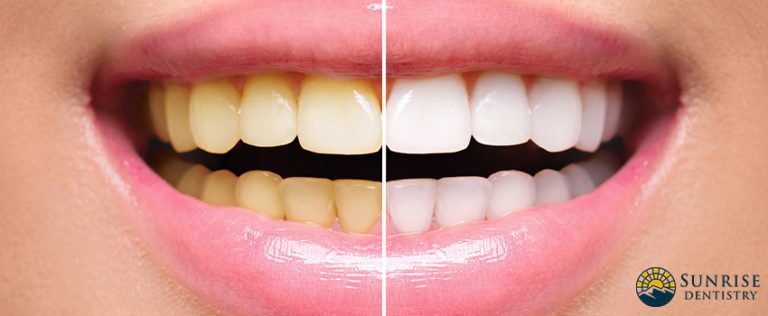Did you know that our jaws have evolved to get smaller, through the ages? Scientists and anthropologists have found that our hunter-gatherer ancestor’s jaws became broader and shorter as they grew more sedentary. It is amazing to think that over the time of human development, we are still changing based upon our own shifting habits and necessities over time.
The jaw initially needed to be capable of a forceful bite in order to consume the animals that were hunted. As diets changed, so did the shape of the jaw. In fact, there was room for all of the teeth, including the wisdom teeth, in the Paleolithic skulls that have been studied. Today, most adults have had to have their wisdom teeth removed. Some scientists blame this on the climate, while others blame it on the diet. We know enough about how diet affects our dental health as well as our overall health, so we cannot discount the role that diet plays in our lives, especially in early development.
This blog will hopefully help you to build a better understanding of baby jaw development and what can be done to promote a healthy, strong jaw from in utero to infancy to adulthood. We can do a lot to help babies develop healthy jaws with strong teeth.
When someone learns they are going to have a child, chances are they will be reading a lot to learn how to parent once the baby is born, and they will probably be seeing the doctor regularly to check on important milestones, including the overall health of the mother. One thing that probably is off the radar is baby jaw development prior to birth.
The primary thing the mother should do is take control of her diet. Eating nutritious foods that help to build strong bones is essential to get the correct nutrition to the baby. Consuming quality proteins and even quality fats like olive oil is also important.
Some causes of poor jaw development include:
A Small Mandible
The mandible is the lower jaw. When it is smaller than usual, it can create a compromised airway, sleep conditions such as sleep apnea, and even difficulties with nursing. It can be treated with mandibular distraction osteogenesis (MDO) surgery. The operation is performed by an oral surgeon and does have some significant risks.
Tongue Tie
Unfortunately, tongue tie is usually a genetic development factor, so there is nothing that can help improve the chances of a baby not being born with it, as it happens during fetal development. Tongue tie is a condition that inhibits the range of motion of the tongue. This affects baby jaw development and can cause issues with the baby’s ability to breastfeed.
Also known as ankyloglossia, tongue tie can have a range of negative effects on a child. It can interfere with a child’s speech and difficulty licking the lips or food like ice cream. Due to the restricted movement of the tongue, oral hygiene is affected, as the tongue cannot sweep side to side to remove food particles. Tongue tie can contribute to a space forming between the two bottom teeth in older children or adults. It can also create a higher risk of sleep apnea. Since the tongue does not have as much mobility, the development of the muscles of the tongue is slowed and can cause issues with chewing and further mandible problems.
Developing the muscles of the tongue at the earliest age as possible can help reduce the severity of some symptoms. Chewing on solid food even before the teeth begin to come in is the best way to do this. A diet with healthy fat and protein is recommended and before the baby is born, the mother should adapt a healthy diet with emphasis on quality oils like olive and avocado oil, healthy protein, and colorful vegetables, which may help the development of the tongue tie to be less severe. Severe tongue tie may require surgery.
Dr. Strietzel recently attended a group discussion about tongue tie. During this meeting, one of the participants noted that in the industrial revolution, Moms going to work contributed to the problems tongue tie causes. The onset of the use of jarred, soft baby food and working mothers no longer regularly breastfeeding caused a significant delay in the development of the tongue. Soft or liquid foods don’t help the baby develop the tongue, as the baby does not need to work at chewing baby food. Substitute-like bottle nipples also do not develop the tongue nearly as well as nursing, and that in turn negatively affects baby jaw development.
Pacifiers, Baby Bottles, and Thumbs (Oh My!)
While these things can be comforting to a child, they can affect the shape of the mouth and the alignment of the teeth. Giving a baby a pacifier to soothe them is certainly a go-to method to calm a baby, and weaning them off the pacifier as soon as possible can save the child from the negative physical effects it may have. The same applies to baby bottles. When it comes to feeding a baby, the best option that supports proper baby jaw development and tooth alignment is to breastfeed. While occasionally supplementing with a baby bottle is fine, it is healthier for the baby to be breast fed whenever possible.
Thumb-sucking is a whole different ballgame. Any dentist can take one look at a child’s teeth and know if the child is a thumb sucker. We can’t watch for this behavior 24/7 if we want to stop it; after all, we do have to sleep sometime. Thumb sucking is a hard habit to break, and it often leads to a child needing serious orthodontia when they are older.
Sippy Cups
Sippy cups can contribute to poor development and jaw problems. They encourage open-mouth breathing and narrow the arches, creating a smaller mouth and a smaller airway, which can lead to breathing and sleeping issues. The rigidity of the plastic makes a child adjust to the sucking action in an unnatural way, which is why it can affect jaw development over time. TMJ (temporomandibular joint dysfunction) can also be an eventual side effect of using sippy cups. This can cause significant joint and facial pain, as well as difficulty chewing food. When it is time to begin shifting to drinking cups, it would be healthier for a child to learn to drink from a plastic cup with handles. Put small amounts into the cup and give the child some time to learn how to properly use it.
Mouth Breathing
Mouth breathing has a series of developmental issues associated with it. In addition to fatigue and a higher prevalence of Attention Deficit Disorder, it can cause a child to develop facial deformities. These deformities can contribute to other conditions that can affect the child well into adulthood. Mouth breathers develop a high palette and a narrow arch. These conditions narrow the airway and often cause sleep disorders like sleep Apnea. Other facial and jaw issues include cheeks that are sunken, a small mouth that does not allow enough space for all the teeth to develop, a recessed jaw or chin, and a flat and/or narrow face.
Mouth breathing has a variety of potential causes, from allergies and enlarged tonsils or adenoids to thumb sucking and tongue tie. Whatever the reason, a child observed breathing through the mouth most of the time should be seen by a doctor for help rooting out the cause and hopefully correcting it before it causes irreversible abnormalities.
Book an appointment now with Dr. Strietzel, a holistic dentist in Durango, CO for more information about proper baby jaw development or any mandible problems.





